Archives
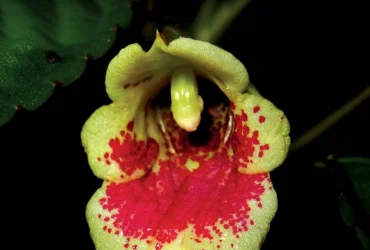 v4i2.74
v4i2.74ISSN: 1800-427X (print)
eISSN: 1800-427X (online)
DOI:10.47605/tapro.v4i2.74
Submitted date: 4 July 2012
Accepted date: 18 August 2012
Published date: 14 November 2012
Pp. 83–87.
GROUP-SIZE AND AGE-SEX COMPOSITION OF NILGIRI LANGUR Trachypithecus johnii (PRIMATES: CERCOPITHECIDAE) IN INDIA
Debahutee Roy*
*E-mail: moni.roy8@gmail.com
Abstract
Group size and group composition of Nilgiri langur (Trachypithecus johnii) was studied in two habitats of Parambikulam Tiger Reserve, Kerala, India. Group size and age-sex composition data was collected during scan sampling, 18 monitoring transect lines, road-strip count, and direct encounter of the groups. Mean group size value significantly differ between moist deciduous forest and evergreen forest. Group size was varied from 2 to 22. The maximum group size, 22 was recorded in evergreen forest habitat. The mean group size of Nilgiri langur is less in moist deciduous forest and higher in evergreen forest.
Key words : Demographic parameters, colobines, Parambikulam Tiger Reserve, Western Ghats.
Section Editor: Colin A. Chapman
eISSN: 1800-427X (online)
DOI:10.47605/tapro.v4i2.74
Submitted date: 4 July 2012
Accepted date: 18 August 2012
Published date: 14 November 2012
Pp. 83–87.
GROUP-SIZE AND AGE-SEX COMPOSITION OF NILGIRI LANGUR Trachypithecus johnii (PRIMATES: CERCOPITHECIDAE) IN INDIA
Debahutee Roy*
*E-mail: moni.roy8@gmail.com
Abstract
Group size and group composition of Nilgiri langur (Trachypithecus johnii) was studied in two habitats of Parambikulam Tiger Reserve, Kerala, India. Group size and age-sex composition data was collected during scan sampling, 18 monitoring transect lines, road-strip count, and direct encounter of the groups. Mean group size value significantly differ between moist deciduous forest and evergreen forest. Group size was varied from 2 to 22. The maximum group size, 22 was recorded in evergreen forest habitat. The mean group size of Nilgiri langur is less in moist deciduous forest and higher in evergreen forest.
Key words : Demographic parameters, colobines, Parambikulam Tiger Reserve, Western Ghats.
Section Editor: Colin A. Chapman
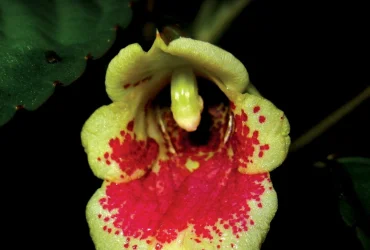 v4i2.73
v4i2.73ISSN: 1800-427X (print)
eISSN: 1800-427X (online)
DOI:10.47605/tapro.v4i2.73
Submitted date: 24 January 2012
Accepted date: 27 June 2012
Published date: 14 November 2012
Pp. 77–82.
BREEDING ECOLOGY OF THE CRESTED SERPENT EAGLE Spilornis cheela (LATHAM, 1790) (AVES: ACCIPITRIFORMES: ACCIPITRIDAE) IN KOLLI HILLS, TAMIL NADU, INDIA
Varadarajan Gokula*
*E-mail: gokulae@yahoo.com
Abstract
The breeding ecology of the crested serpent eagle (Spilornis cheela), focusing on nest-site selection, food habits, and perch-site preference, was studied in the Kolli Hills of Tamil Nadu, India, from May 2005 to May 2010. Thirty-two active nests were located, with nest-site details collected from 27 nests that were accessible. The crested serpent eagle did not construct new nests, but did renew or alter old nests, mainly in December. Both sexes were involved in the nest renewal activities. The clutch size was one, the mean incubation period was 41.5 days, and the mean fledging period was 64.5 days. Nests were found largely along riverine patches. The results indicate the mature and less disturbed riverine forests with large sized trees are critical for the breeding and conservation of this species. The food habits of the eagle were known from prey items brought into the nest by the adult to feed the chick and prey items fed on by the adult. In total, 173 feeding observations were made and the prey items belonged to 17 species of vertebrates. The crested serpent eagle largely preferred reptiles, which accounted for 74% of their diet, followed by birds, which accounted for 18% of their diet. A total of 1237 perching records were observed. The crested serpent eagle preferred to perch on the outer canopy of the trees found largely in the forest edges.
Key words : Clutch size, prey preference, perching preference, nesting behaviour, raptors, avian ecology, Indian biodiversity.
Section Editor: Sujan Henkanaththegedara
eISSN: 1800-427X (online)
DOI:10.47605/tapro.v4i2.73
Submitted date: 24 January 2012
Accepted date: 27 June 2012
Published date: 14 November 2012
Pp. 77–82.
BREEDING ECOLOGY OF THE CRESTED SERPENT EAGLE Spilornis cheela (LATHAM, 1790) (AVES: ACCIPITRIFORMES: ACCIPITRIDAE) IN KOLLI HILLS, TAMIL NADU, INDIA
Varadarajan Gokula*
*E-mail: gokulae@yahoo.com
Abstract
The breeding ecology of the crested serpent eagle (Spilornis cheela), focusing on nest-site selection, food habits, and perch-site preference, was studied in the Kolli Hills of Tamil Nadu, India, from May 2005 to May 2010. Thirty-two active nests were located, with nest-site details collected from 27 nests that were accessible. The crested serpent eagle did not construct new nests, but did renew or alter old nests, mainly in December. Both sexes were involved in the nest renewal activities. The clutch size was one, the mean incubation period was 41.5 days, and the mean fledging period was 64.5 days. Nests were found largely along riverine patches. The results indicate the mature and less disturbed riverine forests with large sized trees are critical for the breeding and conservation of this species. The food habits of the eagle were known from prey items brought into the nest by the adult to feed the chick and prey items fed on by the adult. In total, 173 feeding observations were made and the prey items belonged to 17 species of vertebrates. The crested serpent eagle largely preferred reptiles, which accounted for 74% of their diet, followed by birds, which accounted for 18% of their diet. A total of 1237 perching records were observed. The crested serpent eagle preferred to perch on the outer canopy of the trees found largely in the forest edges.
Key words : Clutch size, prey preference, perching preference, nesting behaviour, raptors, avian ecology, Indian biodiversity.
Section Editor: Sujan Henkanaththegedara
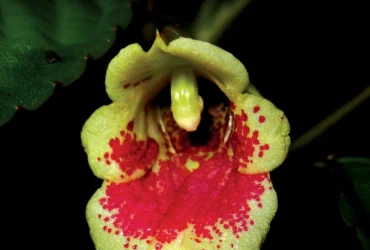 v4i2.72
v4i2.72ISSN: 1800-427X (print)
eISSN: 1800-427X (online)
DOI:10.47605/tapro.v4i2.72
Submitted date: 26 March 2012
Accepted date: 26 July 2012
Published date: 14 November 2012
Pp. 69–76.
BOLBOCERATINE SCARABS OF GENERA Bolbohamatum KRIKKEN, 1980 AND Bolbogonium BOUCOMONT, 1911 (COLEOPTERA: GEOTRUPIDAE) FROM CENTRAL INDIA
Kailash Chandra* & Devanshu Gupta
*E-mail: kailash611@rediffmail.com
Abstract
This study includes a taxonomic account of four species of genus Bolbohamatum; B. calanus (Westwood, 1848), B. phallosum Krikken, 1980, B. marginale Krikken, 1980 and B. laterale (Westwood, 1848) and one species of genus Bolbogonium; B. insidiosum Krikken, 1977 from Central India (Madhya Pradesh and Chhattisgarh). The pronotal ornamentation and external male genitalia of Bolbohamatum species has been diagnosed with the incorporation of an identification key to the species from Central India. A checklist containing 19 Indian species of both genera (Bolbohamatum and Bolbogonium) has also been prepared with their distribution in different states of India as well as outside of India.
Key words : dung beetles, pronotal ornamentation, external male genitalia, distribution, India.
Section Editor: Oliver Hillert
eISSN: 1800-427X (online)
DOI:10.47605/tapro.v4i2.72
Submitted date: 26 March 2012
Accepted date: 26 July 2012
Published date: 14 November 2012
Pp. 69–76.
BOLBOCERATINE SCARABS OF GENERA Bolbohamatum KRIKKEN, 1980 AND Bolbogonium BOUCOMONT, 1911 (COLEOPTERA: GEOTRUPIDAE) FROM CENTRAL INDIA
Kailash Chandra* & Devanshu Gupta
*E-mail: kailash611@rediffmail.com
Abstract
This study includes a taxonomic account of four species of genus Bolbohamatum; B. calanus (Westwood, 1848), B. phallosum Krikken, 1980, B. marginale Krikken, 1980 and B. laterale (Westwood, 1848) and one species of genus Bolbogonium; B. insidiosum Krikken, 1977 from Central India (Madhya Pradesh and Chhattisgarh). The pronotal ornamentation and external male genitalia of Bolbohamatum species has been diagnosed with the incorporation of an identification key to the species from Central India. A checklist containing 19 Indian species of both genera (Bolbohamatum and Bolbogonium) has also been prepared with their distribution in different states of India as well as outside of India.
Key words : dung beetles, pronotal ornamentation, external male genitalia, distribution, India.
Section Editor: Oliver Hillert
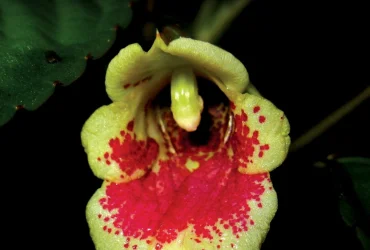 v4i2.71
v4i2.71ISSN: 1800-427X (print)
eISSN: 1800-427X (online)
DOI:10.47605/tapro.v4i2.71
Submitted date: 23 July 2012
Accepted date: 24 September 2012
Published date: 14 November 2012
Pp. 65–68.
DESCRIPTION OF A NEW GENUS OF INDIAN SHORT-TAILED WHIP-SCORPIONS (SCHIZOMIDA: HUBBARDIIDAE) WITH NOTES ON THE TAXONOMY OF THE INDIAN FAUNA
Mandar L. Kulkarni*
*E-mail: mandarkulkarni88@live.com
Abstract
Indian hubbardiids which were recently described but had doubtful generic placements are revised. The new genus Gravelyzomus is described here for Schizomus chalakudicus Bastawade, 2002. A new combination is proposed for Schizomus chaibassicus Bastawade, 2002 which is newly transferred to the genus Burmezomus.
Key words : Gravelyzomus, Burmezomus chaibassicus, Arachnida, taxonomy, India.
Section Editors: James Cokendolpher & Mark Harvey
eISSN: 1800-427X (online)
DOI:10.47605/tapro.v4i2.71
Submitted date: 23 July 2012
Accepted date: 24 September 2012
Published date: 14 November 2012
Pp. 65–68.
DESCRIPTION OF A NEW GENUS OF INDIAN SHORT-TAILED WHIP-SCORPIONS (SCHIZOMIDA: HUBBARDIIDAE) WITH NOTES ON THE TAXONOMY OF THE INDIAN FAUNA
Mandar L. Kulkarni*
*E-mail: mandarkulkarni88@live.com
Abstract
Indian hubbardiids which were recently described but had doubtful generic placements are revised. The new genus Gravelyzomus is described here for Schizomus chalakudicus Bastawade, 2002. A new combination is proposed for Schizomus chaibassicus Bastawade, 2002 which is newly transferred to the genus Burmezomus.
Key words : Gravelyzomus, Burmezomus chaibassicus, Arachnida, taxonomy, India.
Section Editors: James Cokendolpher & Mark Harvey
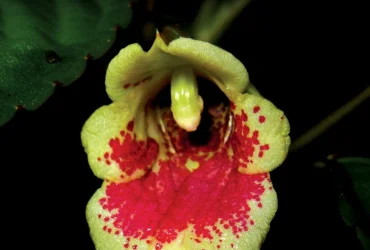 v4i2.70
v4i2.70ISSN: 1800-427X (print)
eISSN: 1800-427X (online)
DOI:10.47605/tapro.v4i2.70
Published date: 14 November 2012
Pp. 60–64
EDITORIAL : Meet the Parasites: genetic approaches uncover new insights in parasitology
Ria R. Ghai & Colin A. Chapman*
*Section Editor: Taprobanica, the journal of Asian Biodiversity
With the continual refinement and development of new molecular approaches, the last few years have witnessed a dramatic increase in the number of parasitological studies using genetics to answer ecological questions. Particularly, the advent of full genome sequencing holds promise to "decode all life", offering new potential to not only understand, but cure diseases. With the over-abundance of information and the comparable rapidity that these approaches can provide data, ecologists must be more careful than ever to select tools that suit their objectives and provide the resolution to their data that best fits their question, not simply the most attractive option. In this vein, Weinberg (2010) acknowledges that the molecular revolution has allowed a new mentality of “discover now and explain later” to invade research, and this has placed hypothesis-driven research under threat. However, regardless of potential setbacks that molecular approaches have introduced into basic research, their contributions to the progression of science are unquestionably more numerous and far reaching. Here, we discuss six areas where molecular approaches are useful to ecological parasitologists.
eISSN: 1800-427X (online)
DOI:10.47605/tapro.v4i2.70
Published date: 14 November 2012
Pp. 60–64
EDITORIAL : Meet the Parasites: genetic approaches uncover new insights in parasitology
Ria R. Ghai & Colin A. Chapman*
*Section Editor: Taprobanica, the journal of Asian Biodiversity
With the continual refinement and development of new molecular approaches, the last few years have witnessed a dramatic increase in the number of parasitological studies using genetics to answer ecological questions. Particularly, the advent of full genome sequencing holds promise to "decode all life", offering new potential to not only understand, but cure diseases. With the over-abundance of information and the comparable rapidity that these approaches can provide data, ecologists must be more careful than ever to select tools that suit their objectives and provide the resolution to their data that best fits their question, not simply the most attractive option. In this vein, Weinberg (2010) acknowledges that the molecular revolution has allowed a new mentality of “discover now and explain later” to invade research, and this has placed hypothesis-driven research under threat. However, regardless of potential setbacks that molecular approaches have introduced into basic research, their contributions to the progression of science are unquestionably more numerous and far reaching. Here, we discuss six areas where molecular approaches are useful to ecological parasitologists.
Hubungi Kami
The ultimate aim of the journal is to provide an effective medium for communication of the latest and best scientific information.
Copyright © 2020 Taprobanica. All Rights Reserved
Jasa Pembuatan Website by IKT




